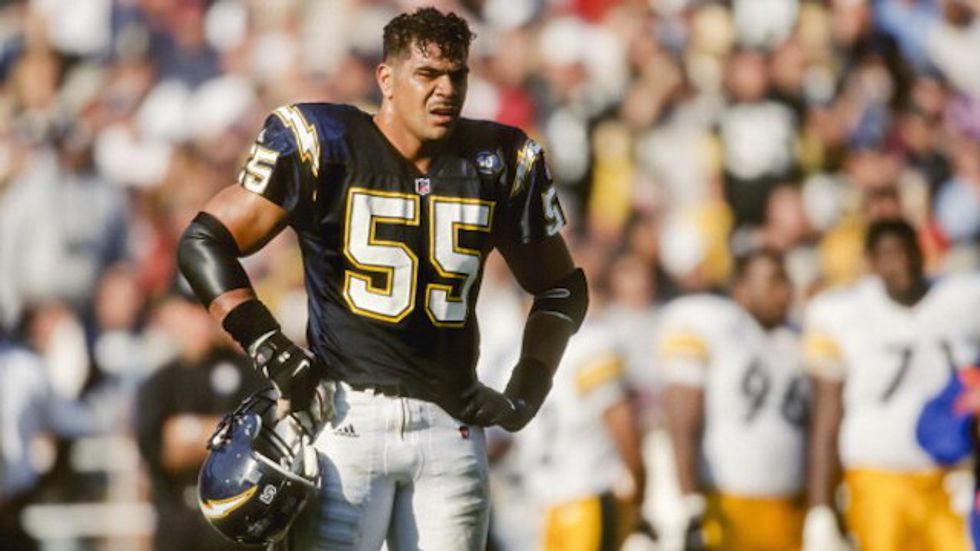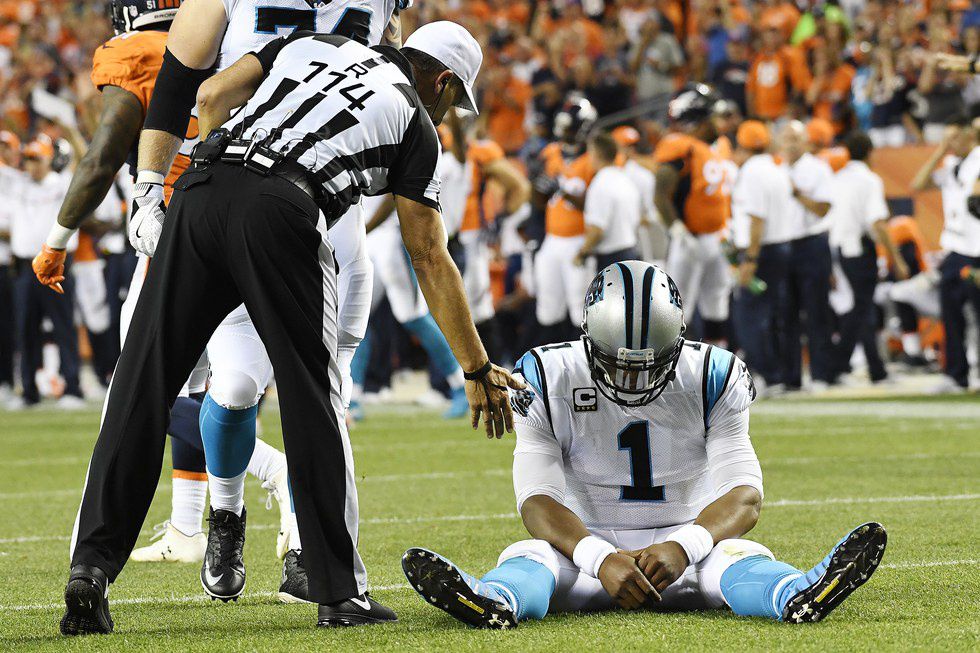The game is just too fast and too physical to eliminate them all together. You can change the rules so that players will be less inclined to target opposing players' helmets, but you cannot change the root of the game: physicality.
Almost twenty years ago, all the NFL did was deny any sort of correlation between multiple concussions and long-term brain injuries. Former commissioner Paul Tagliabue famously brushed off the topic of concussions at a forum in 1994 by calling it a "pack journalism issue." Three years later, neuroscientists were finding correlations between repetitive concussions and brain damage. In an attempt to make it look like the NFL was taking steps to protect its players,Tagliabue established the "Mild Traumatic Brain Injury Committee." But he appointed a rheumatologist (a doctor that specializes in joints, muscles, and bones) to be chairman of the committee. At the same time, ESPN was regularly airing the popular "Jacked Up!" segment, which glamorized all the biggest hits from the previous week's games. Needless to say, a lot has changed since the years of denial.
The public sees the issue differently today. But the road to this realization is paved with the morbid results of multiple improperly treated concussions. Previously, when former players passed away at an early age people didn't think football was the direct cause, even though there was a correlating pattern of CTE (chronic traumatic encephalopathy, a brain condition caused by multiple blows to the head) found in their brains. It wasn't before the league acknowledged the dangers of concussions that the general public put two and two together. That time came in 2009 when NFL Spokesman Greg Aiello told the New York Times, “It’s quite obvious from the medical research that’s been done that concussions can lead to long-term problems.”
What followed in wake of his comments was tragic: more and more deceased players' brains showed CTE. And in real time we watched as current and former players lost their lives due to complications from concussions. Some of the worst cases being Hall of Fame linebacker Junior Seau, and Kansas City Cheif linebacker Jovan Belcher.
The football community was shaken to its core. What was happening was terrible, and it was all because of the nature of the game we love so much. Adjustments in the rules had to be made, and sure enough, they were. A player can now be ejected for targeting another player's head. Also, referees are much more likely to make calls such as "illegal hands to the face." Even with these rule changes, and all the emphasis on the proper way to tackle, there is still great risk involved. How we manage that risk is what is at issue today.
Every player wants to do everything they can to help their team win, but when it comes to personal health, a player should put themselves first. Donald Herman, my football coach at Martha’s Vineyard Regional High School, said “I have never had a player, whom I thought had received a blow and I thought he was concussed stay in a game. I have had players that demonstrated to me they were, and a red flag that went up on them. They were checked out at the game and cleared to continue. I then referred them to our trainer the next day.” If a process like this is not closely followed following a suspected concussion the consequences could be dire. Which is where the NFL need to do a better job in-game keeping players safe.
Last Thursday Cam Newton and the Carolina Panthers made their way to the Mile High city for a rematch with the defending Superbowl Champion Broncos. Thinking back to the Superbowl in February one thing comes to mind: defense. The Broncos won that game because they continuously put pressure on Cam Newton. With that previously successful strategy in mind, it's no surprise the Broncos came back at Newton with the same gameplan. Super Cam got hit, a lot. He was sacked three times and took an additional eight hits from defenders after he threw the ball. He also scrambled eleven times over the course of the game. That's quite a lot of physical punishment for any NFL athlete regardless of where the hits land. What is especially concerning, however, is how many of those hits came to Newton's head. There were at least three occasions when Newton took a blow to the helmet. He was visibly wobbly at times and even was face-down on the sideline at one point of the game. Yet, Newton finished the game, and now some are saying he shouldn't have.
After suffering a concussion, you’re at risk of second impact syndrome. “Second impact syndrome is something that can happen days or weeks later; it doesn’t have to be shortly after you’ve suffered a concussion. If you get hit again or something else happens it can cause your brain to swell uncontrollably, and your brain cells go into mass suicide. As long as you suffer a concussion and your brain is in that metabolic cascade, it’s extremely susceptible to increased injury or death,” said Tania Laslovich, athletic trainer at Martha’s Vineyard Regional High School.
This is clearly an example of the gray area in today's concussion protocols in the NFL. On the NFL's 'Concussion Checklist' the first item states,
"If a player exhibits or reports signs or symptoms of concussion on the field, without exception, he is to be removed immediately from the field of play and evaluated by the Club medical team, pursuant to the Protocols. This evaluation shall include a locker room examination."
Newton made one trip to the locker room to be checked out after a sack in the third quarter of Thursday's game. However, when it was crunch time and the Panthers needed to go down the field to score and win the game, things were different. After taking a direct hit to his helmet, which resulted in a 15-yard penalty and Newton writhing in apparent pain on the ground, Newton was allowed to stay in the game. Why? Because he's their quarterback and frankly, if he's not out there, the Panthers don't have a shot at winning the game. This is where the problem lies. Does player safety trump the outcome of the game? The NFL's protocol states,
"In the event the occurrence of a concussion is unclear, or a player sustains a mechanism of injury (“big hit”) that is reasonably expected to give rise to a concussion, and/or a concern is raised by another player, coach, game official, ATC spotter, or Unaffiliated Neurotrauma Consultant, the player shall be removed immediately from the field."
It is clear that protocol was not followed in Thursday night's game. If the NFL is serious about protecting its players from future harm, Newton should have been removed from the game in the fourth quarter. Would he have protested his removal given the circumstances? Probably, but does a player's protest change the rule?
The Panthers ended up losing the game on a missed field goal attempt. All of that punishment to Newton's body for nothing but an L. We can only hope he's feeling alright following the beating he took. If he's waking up with headaches the next couple days, though, who is to blame? The few Broncos players that connected helmet to helmet with the Panthers quarterback? Newton for staying in the game following getting visibly rocked multiple times? Or the NFL for not following through with the guidelines they put in place to protect their players that make the NFL the multi-billion dollar industry that it is. You make the call.



























